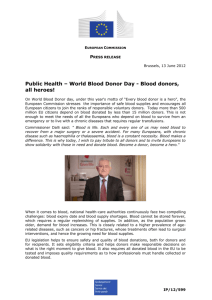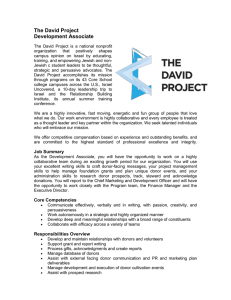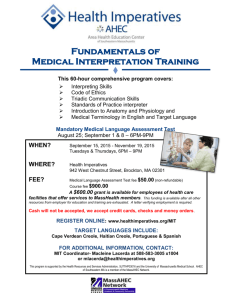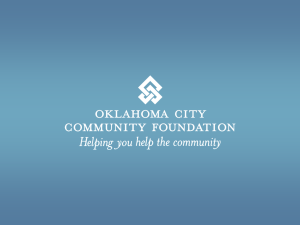MIT SCALE RESEARCH REPORT
advertisement
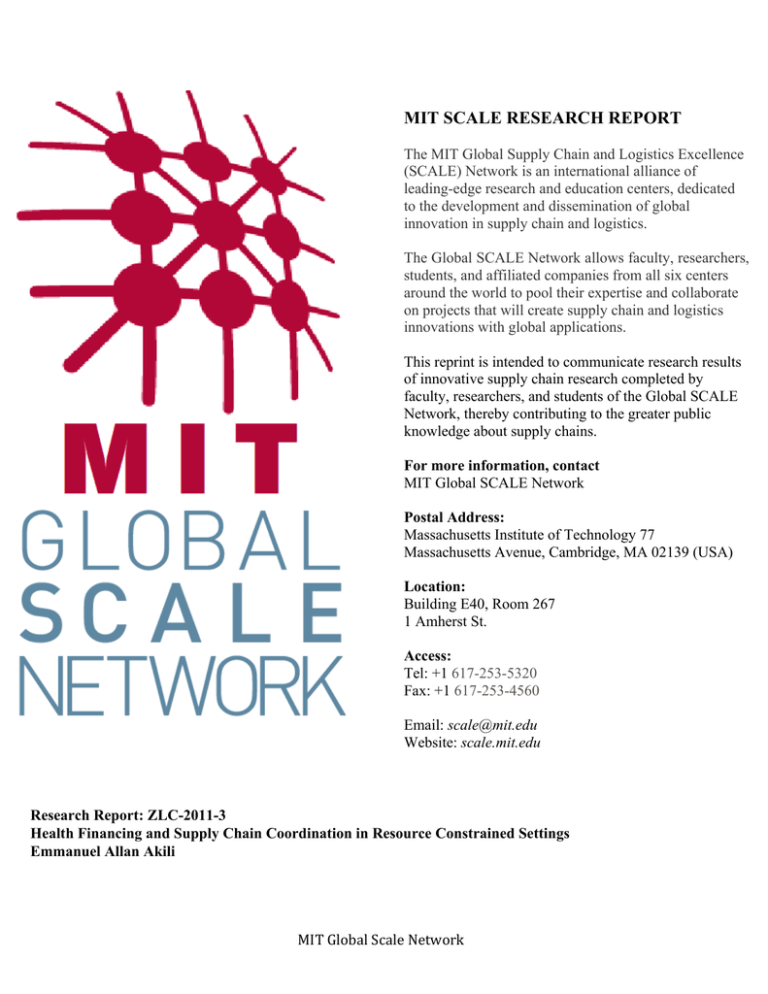
MIT SCALE RESEARCH REPORT The MIT Global Supply Chain and Logistics Excellence (SCALE) Network is an international alliance of leading-edge research and education centers, dedicated to the development and dissemination of global innovation in supply chain and logistics. The Global SCALE Network allows faculty, researchers, students, and affiliated companies from all six centers around the world to pool their expertise and collaborate on projects that will create supply chain and logistics innovations with global applications. This reprint is intended to communicate research results of innovative supply chain research completed by faculty, researchers, and students of the Global SCALE Network, thereby contributing to the greater public knowledge about supply chains. For more information, contact MIT Global SCALE Network Postal Address: Massachusetts Institute of Technology 77 Massachusetts Avenue, Cambridge, MA 02139 (USA) Location: Building E40, Room 267 1 Amherst St. Access: Tel: +1 617-253-5320 Fax: +1 617-253-4560 Email: scale@mit.edu Website: scale.mit.edu Research Report: ZLC-2011-3 Health Financing and Supply Chain Coordination in Resource Constrained Settings Emmanuel Allan Akili MITGlobalScaleNetwork For Full Thesis Version Please Contact: Marta Romero ZLOG Director Zaragoza Logistics Center (ZLC) Edificio Náyade 5, C/Bari 55 – PLAZA 50197 Zaragoza, SPAIN Email: mromero@zlc.edu.es Telephone: +34 976 077 605 MITGlobalScaleNetwork Health Financing and Supply Chain Coordination in Resource Constrained Settings By: Emmanuel Allan Akili Thesis Advisor: Ananth Iyer Thesis Co-Advisor: Noel Watson Summary: Improving access to health services is one of the fundamental steps in achieving effective health outcome. This thesis therefore embarks on exploring the access impact of coordinating the enormous multistakeholders’ efforts in health care and focuses on such challenges as conditions attached to donors aid, supply chain inflexibility, and demand uncertainty in resources constrained countries. Emmanuel Akili graduated from the ZLOG program in 2011. He is currently working at Mzumbe University as an Assistant Lecturer and has experience in PSM for health commodities in the Public and Private Sector. KEY INSIGHTS 1. Through donors’ coordination, a modest amount of funding can have a very large impact in effective health outcome. 2. Besides its size, the access problem varies significantly between facility levels, health delivery channels, and geographical regions in resource-constrained countries. 3. Allowing operational flexibility in the health supply chain positively impacts access to effective health services. 4. Health facilities are potentially deprived of necessary capacity following the adoption of a free health policy. Introduction Lack of access to essential medical care, including consultation with qualified care providers and access to essential medicines, remains one of the most cited global public health problems (WHO, 2004). Various economic, social and cultural factors are responsible for lower utilization of effective health services. O´Donnell (2007) argues that people in need of health services fail to access and use them because of both demand and supply side barriers. To facilitate measurement, “access to healthcare” is therefore defined as representing availability, accessibility, affordability, and acceptability of effective health services. Being more severe in resource-constrained countries, the problem receives much attention from donors, governments, global institutions, and other policy makers. Through their support in the form of financial and technical aid, they hold a strong determination to see the end of this problem in poor countries. With the donors independently attaching conditions to their aid, achievement of effective health outcomes will be hard to achieve without adequate coordination of these efforts. Therefore, a significant number of studies now center on assessing the risks related to donor proliferation (Aldasoro, 2009) and the impact of effort in achieving coordination (Bigsten, 2006). Harmonization and coordination of donors and other stakeholders in health care has therefore become an area receiving unprecedented attention. This is because of conviction that with the same level of resource commitment, improved coordination across donors may permit significant improvement in outcomes (OECD, 2005). The greatest impact can be achieved with the ability to identify those whose donor conditions are critical or have the largest impact for a given dimension. As part of national responses to the problem, various initiatives are also brought forward for the same cause. These include Bamako initiative that advocates for a user fee and the move toward free healthcare as it was recently adopted in, among other places, Sierra Leone where the user fee was abolished effective April 27, 2010. restrictions like intervention, chains, and fund release. diseases, supply Figure 1: Effective Health Outcome when only donor 1 constraints are relaxed While removal of a user fee is considered an effective strategy to increase access to healthcare, there are suggestions that this should be combined with other policy reforms such that poor people will not only be able access these services but also assure they are of good quality (McPake, Schmidt, Araujo, & Kirunga-Tashoby, 2008). The effect of removing the user fee at the facility level also appears to be an important element in pre-reform assessment (McPake, Schmidt, Araujo, & KirungaTashoby, 2008). Based on these facts, a pilot study conducted and Sierra Leone was objectively chosen as a case study to provide actual country data that were used in testing the viability of an innovative mathematical model to understand the impact of donors’ coordination on effective health outcome. Taking advantage of the existing health system reforms in the country, various scenarios related to both the new free health care (FHC) and the existing cost recovery schemes (CRS) were used as necessary dimensions in the model. Along with this move, other issues contextual to the country are statistically analyzed in the process to get answers for such research questions as what the impact of coordination on effective health outcome is, and what the extent of the access problem in Sierra Leone is, the impact of operational flexibility in the health supply chain, and the impact of the free health policy adoption on the capacity of existing systems. Figure 2: Effective Health Outcome when only one donor 2 constraints are relaxed Access to effective health services As we have seen, access to effective health care is measured using availability, accessibility, affordability, and acceptability of services including medicines and other commodities. Fill rate and service level are used as parameters in the assessment of availability of medicines in facilities. While fill rates are determined by the percentage of items on prescription that are satisfied using available stock, the number of prescriptions that were fully satisfied by the available stock is used to determine the service level. That is to say, if any of the prescribed medicine missed, the demand on the prescription form is regarded as not served. Impact of s upply chain and donors coordination on effective health outcome Through donors’ coordination, a modest amount of funding can have a very large impact on effective health outcome. The best impact can be achieved with the ability to identify which donor conditions are critical or have the largest impact for a given dimension. Test results from the model illustrate the extent the saving in the number of life years is achieved. As much as 90% of life years (DALYS), which would otherwise be lost, are saved as a result of withholding one donor restrictions on regions to be covered with particular interventions. The same can is observed with other donors and for different Figure 3: Fill rate by facility level in the 3-tiered health care system Primary facilities do better in availability of medicines than secondary and tertiary facilities. The fill rate and service levels in these facilities were 87% and 72.5% respectively. districts before shipment from Copenhagen. Furthermore, the government adheres to using the two separate supply chains for cost recovery and free health. The disparity in performances of facilities as observed in this study is vast. Comparison of service level between free health and cost recovery indicates that the FHC is about 20% better than cost recovery, as seen in the figure below. While lack of operational flexibility in health supply chain may underlie critical system bottlenecks, solving the problem by allowing flexibility positively impacts access to effective health services. Figure 4: Service level for primary, secondary, and tertiary levels The walking time and waiting time before patients get treated at the hospital is used to assess accessibility to health services. Transport cost could be another important parameter to measure this problem. Figure 6: Service Level between Cost Recovery and FHC As a solution to this problem, this study recommends enabling flexibility of system such that it is possible to transship medicines between facilities and pool them for sharing between free health and cost recovery within facilities. Figure 5: Walking and waiting time before actually obtaining treatment at different facilities (in minutes) Most people spend more than 1 hour from the time they fall sick to when they get treated. While the problem is so vast in the whole country, accessibility varies greatly between facilities with primary level being more accessible than facilities in secondary and tertiary levels. If less stock is kept at a central level, if information about stock availability is shared between facilities, and if reliable transport is dedicated to transshipment, service levels can significantly be improved with less cost. In this study, sharing of stocks between cost recovery and free health was found to have a significant contribution in increasing the fill rates, as seen below. Another important barrier to health is the cost of service. While it is estimated that 20% of people eligible for FHC in the urban areas are the poorest of the poor (PP-FH) and could not afford to pay any fee, the situation is worse in rural areas where the estimates show that more than 70% of population targeted by FHC are destitute. At $10 for a normal delivery and $100 for a caesarean, the cost is prohibitive for the 70% of the population who survive on $1 a day (Boseley, 2010). Operational flexibility in health supply chain Free health comes with the group of new patients, the poorest of the poor who would otherwise be barred from getting treatment under cost recovery. This results in unpredictability of demand as to where people actually go for treatment. On the other hand, the supplies of medicines for free health are earmarked for distribution to specific Figure 7: Contribution of cost recovery and free health stocks in fulfilling prescription over time Impact of Free Health on Facility Capacity The fee generated under cost recovery is used to pay for volunteers, medicine, medical/surgical supplies, maintenance and repair of facilities, emergency transportation of patients to referrals, and incidental costs related to the cost recovery system (Government of Sierra Leone, 2006). About 20% of this capacity is removed from the facilities following the introduction of free health. Before free health, 60% of health workers were volunteers. It is not known how facilities afford to restore this capacity after removal of the fee. There is also no any specific plan for the free health project to re-inject funds back into the facilities and restore the deprived capacity. If it is possible to convince donors to relax some conditions on the use of free health aid, the portion of the funds can be used to finance capacity in the facilities. Conclusions The mathematical model for donor coordination may be used for monitoring and evaluation of funding dynamics and the corresponding system performance in terms of such perimeters like disability adjusted life years (DALY), quality adjusted life years (QALY), mortality rates, and number of people treated, among others. This will allow for ontime response to negative outcomes, delays, and bad economic turns for the donor community. On the other hand, if flexibility is emphasized in health care delivery, supply chain performance can be optimized and good results can obtained based on indicators like delivery time, inventory cost, and responsiveness or service levels. Removal of user fee is a good step toward increasing access to health. However, care must be taken to ensure that the best possible outcomes are obtained from these efforts. Figure 8: Guide to removing hospital user fee As discussed, supply chain coordination is indispensable when planning for a multistakeholders effort in achieving effective health outcome. As seen in the figure above, based on McPake et al. (2008), its inclusion in the early stages of planning for such initiatives as free health system is therefore highly recommended. Works Cited Aldasoro, I. P. (2009, April). Less Aid Proliferation and More Donor Coordination? The Wide Gap between Words and Deeds. Working Paper No. 1516 . Bigsten, A. (2006). Donor Coordination and the Uses of Aid. Working paper. Göteborg University, Sweden. Boseley, S. (2010, April 28). Free healthcare for Sierra Leone-and the whole lot of Tony Blairs. Retrieved June 2010, from The Guardian: http://www.guardian.co.uk/society/sarah-boseleyglobal-health/2010/apr/28/maternal-mortality-infantmortality Government of Sierra Leone. (2006). Mark Up on Medicines and Medical Supplies. Freetown: Ministry of Health and Sanitation. McPake, B., Schmidt, A., Araujo, E., & KirungaTashoby, C. (2008). Freeing up healthcare: A guide to removing user fee. London: Save The Children. O´Donnell, O. (2007). Access to health care in developing countries: breaking down demand side barriers. Cad. Saude Publica , 23 (12), pp. 28202834. OECD. (2005). Paris Declaration on Aid Effectiveness. Ownership, Harmonisation, Alignment, Results and Mutual Accountability, High Level Forum, Paris. Paris: High Level Forum. WHO. (2004). Equitable access to essential medicines:a framework for collective action. WHO Policy Perspective on Medicines , 8.



